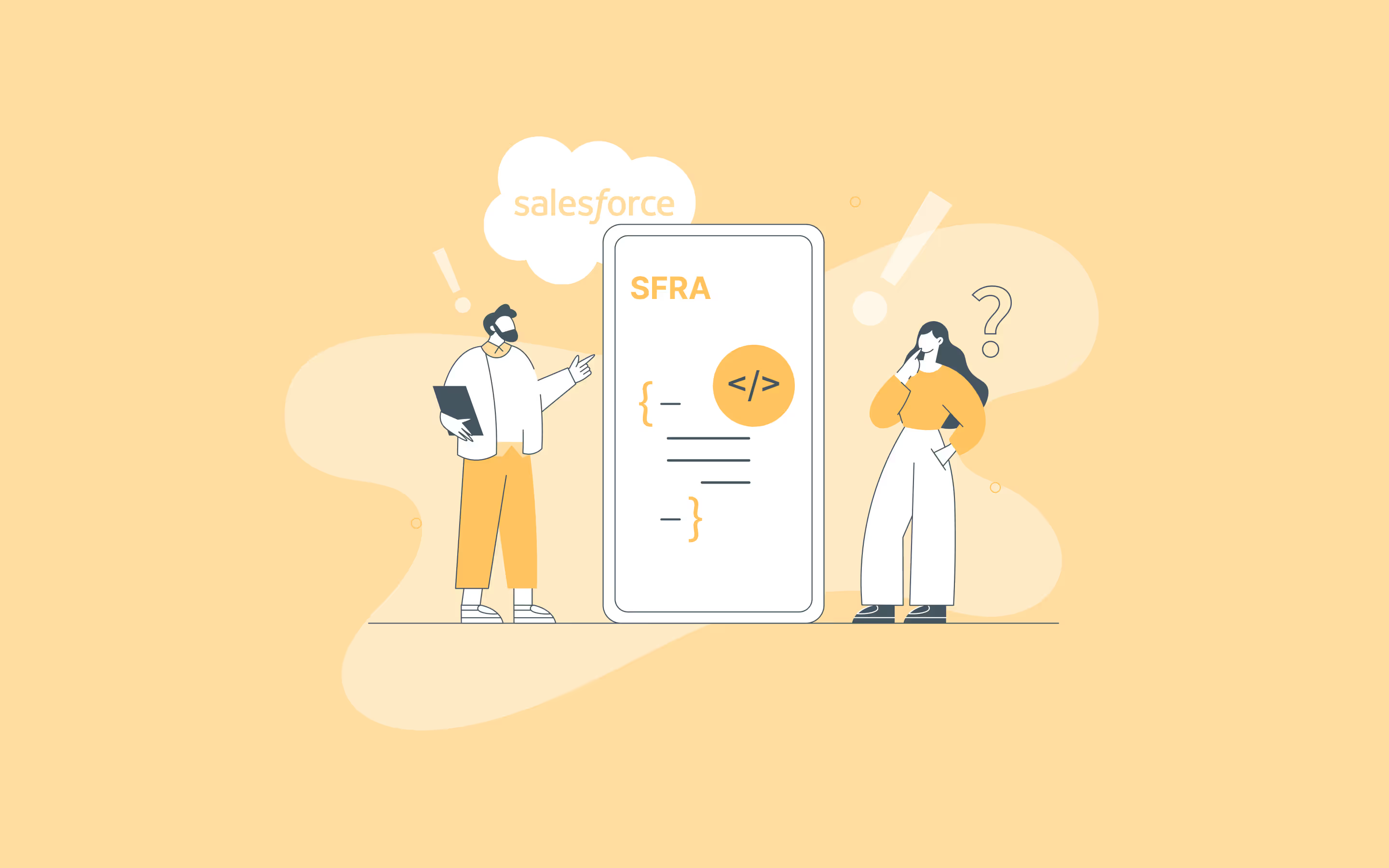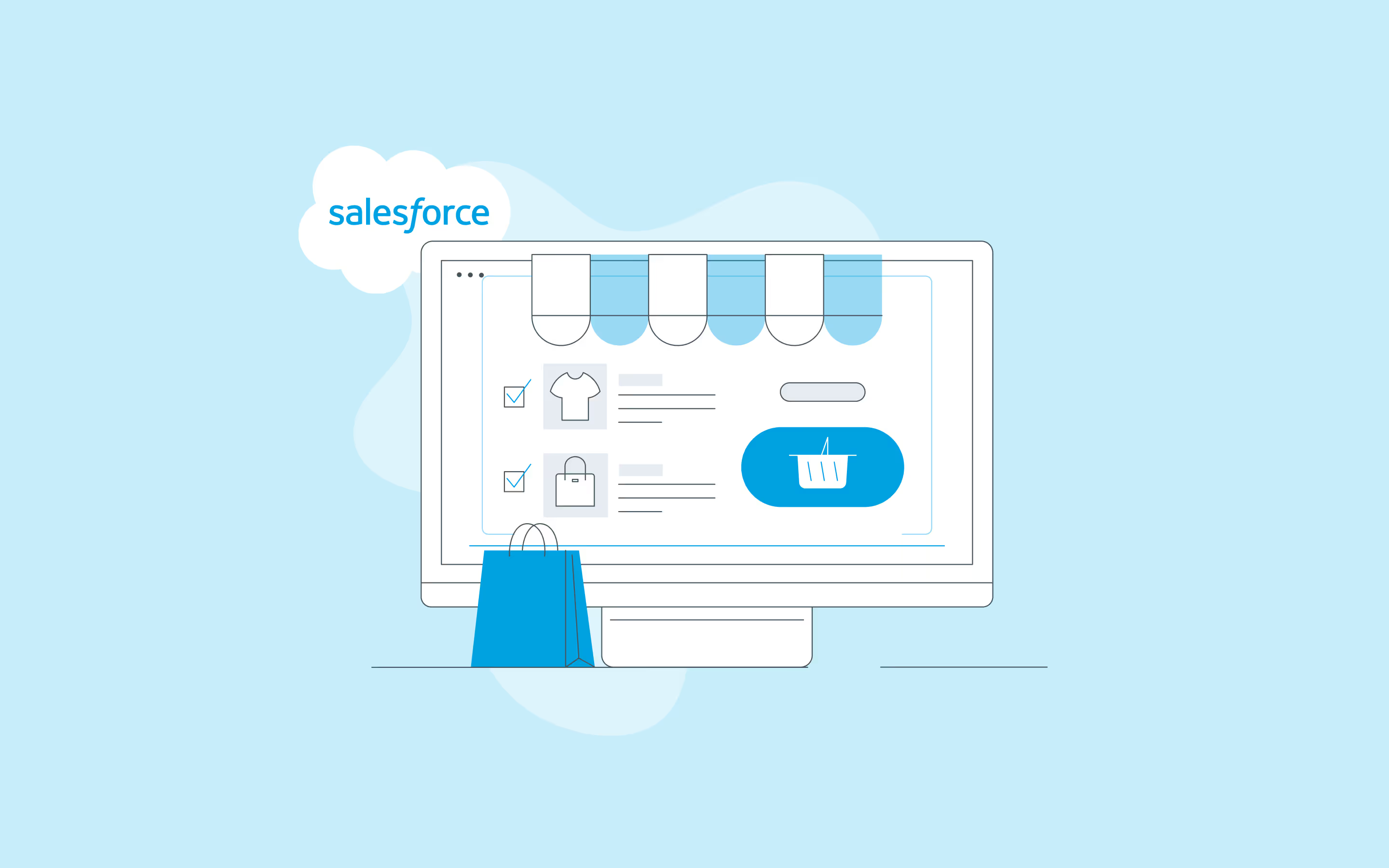

5 min read
•
Salesforce
•
August 25, 2025
SFRA Explained - Why Salesforce Commerce Cloud Needed a Fresh Start
SFRA was Salesforce’s commitment to building e-commerce sites that could survive and thrive in 2018 and to its credit it was the best choice for an upgrade through 2022 if you could afford it. But its time has come and gone.
Why Salesforce Commerce Cloud Needed a Fresh Start & What Is SFRA
If you’re still hearing SFRA tossed around in boardrooms, vendor pitches, and engineering meetings (and you’re not entirely sure what it means) you’re not alone. There’s a lot of chatter, some misplaced nostalgia for last decade’s technology, and very little that’s jargon-free or actually useful. This is a super brief attempt to clear some of that up.
The Basics: What Is SFRA?
SFRA stands for "Storefront Reference Architecture." (Personally I thought it was Salesforce Reference Architecture, but I guess it can be both). It’s Salesforce’s modern template for building e-commerce sites. In practice, it’s the foundation their Commerce Cloud expects you to use if you want speed, maintainability, and (frankly) access to the latest features fed to you from the Commerce Cloud product team. Where previous generations gave you a “starter kit” built for desktop shopping and slow update cycles, SFRA is in theory designed from the ground up to tackle modern site problems in a modern way. But modernity is the problem. What was modern in 2018 quickly becomes outdated by 2025. For context on the pace of change - Tiktok was only launched into the US in 2017. In web terms 2018 is forever ago.
Why SFRA Exists
You have to have a sense of the history of Demandware to really answer this question. Demandware’s winning idea was that you could put ecommerce into the cloud and customers would still use it. But the founding technology of Demandware was Intershop which itself was formed in 1992. That is literally the pre-history of ecommerce and a tribute to Stefan Schaumbach that the whole thing basically still worked..
So what had changed in 2018? Customers had been shopping on their phones for the past five years or so. Brands had become more demanding of the pace of change. They wanted to do more to stay ahead. Having a mobile website was table stakes now. So SFCC needed an architecture that was more flexible than SiteGenisis, and more mobile friendly. SiteGenesis, the old architecture, just wasn’t built for teams who want to tweak a cart one week, redesign the homepage the next, and roll out Apple Pay without crossing their fingers every time they push code. Too many tied-together scripts, too much legacy debris.
SFRA was Salesforce’s answer to both the technical and commercial headaches. They looked at two major pain points; a need for real mobile performance, and a requirement for modularity. Then, they rewrote the blueprint. It was still what we now call monolithic but it was a leap forward in the way information moved around SFCC and got to the user.
How SFRA Works in the Real World
This isn’t just a change in code style. SFRA brought:
- Components you can actually pick apart and rebuild, rather than cycling through a house of cards with every update.
- Tools and structures familiar to modern developers. (You’re using Bootstrap (hooray for 2018), modern JavaScript (hooray again), a sensible view layer.)
- Page layouts and features that are built around standard requirements for what customers do on mobile, tablet, and desktop without the team needing to hack at breakpoints.
- Quick connectors for payments, search, reviews, and analytics, saving your team months of vendor mediation and double-work.
- Templated, but not cookie-cutter. You don’t have to look like a Salesforce demo unless you want to.
What It Changed for Digital Teams
Deploying any change used to mean crossing your fingers and hoping three other things didn’t break. With SFRA, you’re dealing with modules: change the cart, and the homepage doesn’t fall over. Want to swap a payment provider? You don’t have to undo half the checkout flow.
Most teams believed they would see faster build times, easier onboarding for new engineers, and a long-term drop in maintenance costs. It’s not zero-maintenance, it never is, but you're not weighed down by years of tech debt with every new sprint. It didn’t always quite work out as neatly as that. And the giant SIs charged a lot of money for not a whole lot of actual work to get there. But hey, it’s progress.
The Big Picture: SFRA was good, but too expensive
If you’re an e-commerce leader today and your site hasn’t at least moved to SFRA, that last point was probably key. Like many advances in Salesforce land it was weighed down by the greed of big system integrators who saw an opportunity to get re-platform money for upgrade workloads.
So, often because of the time projects took and the cost of getting help, up to 50% of SFCC customers did not upgrade. (There are no official numbers but anecdotally that’s not far off.)
Should I go SFRA or composable storefront today?
Nobody wins by sticking with tech whose best years are behind it. Speed is measurable. Cost of ownership is never going down on old stacks. Customer expectations get higher each season, not lower. In its day SFRA gave you a modern toolset for an environment where agility mattered more than keeping the lights on. But it’s 2018 technology. It works today - there are some great highly performant SFRA sites out there - but doesn’t offer any forward looking benefits at all. It won’t help you develop skills in managing your data, it won't help you move faster on content, it won’t help you escape the cadence of Salesforce on product updates. It’s better than SiteGenesis. But that was 2018’s problem, not 2025’s. And truthfully, building SFRA in 2025 is just wastefully expensive. Though the absolute cost has come down a lot in the past few years, you will be upgrading to composable in 2027 so you are just throwing money down the drain..
But doesn’t composable storefront require SFRA?
No. SFRA is an entire reference architecture. But SFCC has had solid APIs available to it forever. If you are on SiteGen today you can build some of the elements of SFRA architecture into your SFCC backend - hooks and custom endpoints, even controllers - that mean you can drive your composable site without a huge back-end re-architecture in the short term. In fact one of the arguments for composable is the opportunity it gives teams to upgrade the back-end themselves over time in a controlled way and improve the way they have constructed Salesforce with much lower risk to the production site. And the time to do that - now they aren’t dealing with merchant requests and technical spinning plates all day long.
SFRA was Salesforce’s commitment to building e-commerce sites that could survive and thrive in 2018 and to its credit it was the best choice for an upgrade through 2022 if you could afford it. But its time has come and gone. And a composable storefront allows you to skip comfortably past SFRA right to a modern (for now!) stack. Salesforce is investing heaviest now in composable SFCC. The price of a build is six figures rather than seven. And it sets up SiteGen customers to take advantage of AI innovations as they emerge from Salesforce and beyond.
Modern SFCC customers have to move faster than SFRA and templated architectures will allow them. In 2026 you will be glad you took the plunge and skipped past SFRA to composable storefront.
Read more

July 15, 2025
Composable
Ecommerce
How Does Composable Help Marketers and Merchants

August 8, 2025
Salesforce
Ecommerce
Why Salesforce Commerce Cloud Is Still the Best Enterprise eCommerce Platform
